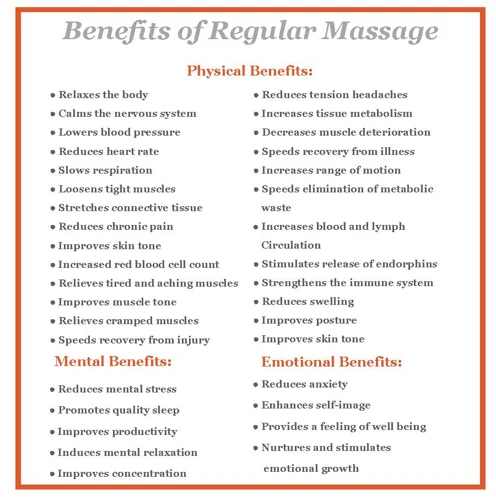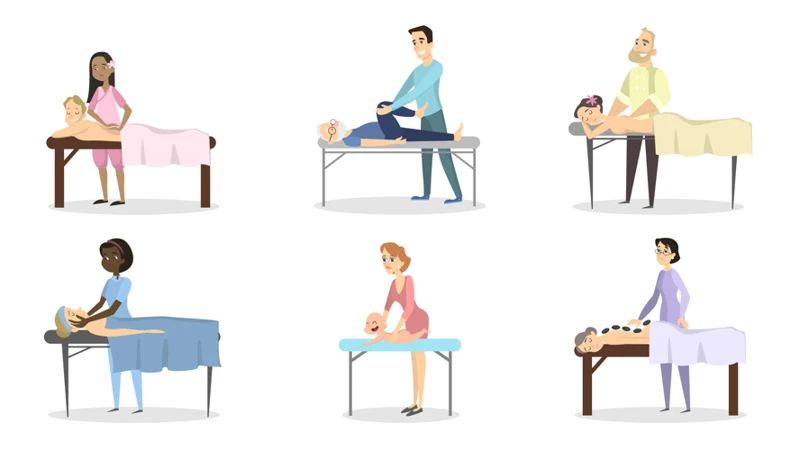If you’re looking to maximize the benefits of massage therapy, you may be wondering, “How often should you get a massage?” Massage therapy has been proven to reduce stress and tension, alleviate muscle soreness and stiffness, improve circulation, and more. With regular massage sessions, you can experience long-term physical and mental health benefits. To get the most out of your massage therapy sessions, it’s important to determine how frequently you should get a massage.
Contents
Benefits of Massage

Mental Health Benefits
Massage is a great way to reduce stress and promote overall wellness. It can help improve sleep, reduce anxiety and depression, and even boost your mood. Regular massage can also help to improve mental clarity and focus.
Physical Health Benefits
In addition to its mental health benefits, massage also offers a number of physical health benefits. It can reduce muscle tension, improve circulation, and increase flexibility. Regular massage can also help to reduce the pain associated with chronic conditions such as arthritis, fibromyalgia, and sciatica.
So, how often should you get a massage to maximize its benefits? The answer depends on your individual needs, but most experts recommend getting a massage at least once a month. Getting a massage more often can help to further reduce stress and improve overall well-being.
How Often Should You Get a Massage?

General Recommendations
The general recommendation for how often you should get a massage is once every four to six weeks. This can vary depending on your individual needs, lifestyle, and physical activity level, but it’s a good rule of thumb to follow. Massage can be beneficial for stress relief, relaxation, and sore muscles, however, it is important to not overdo it, as too much massage can lead to soreness or even injury.
Chronic Pain
If you suffer from chronic pain, massage can be an effective way to manage it. Depending on the severity of your pain, you may need to get a massage more often than once every four to six weeks. It is recommended to consult with a doctor or physical therapist to determine the best course of action. Massage can help reduce inflammation and tension, which can lead to a decrease in pain.
Swedish Massage
Swedish massage is a type of massage that is designed to relax the muscles and increase blood and oxygen flow. It is generally recommended that you get a Swedish massage once a month, although more frequent massages may be beneficial for those who have chronic pain or tension in their muscles. Additionally, regular Swedish massage can help reduce stress and promote overall wellbeing.
In conclusion, it is important to know how often you should get a massage in order to maximize its benefits. Generally, it is recommended to get a massage once every four to six weeks. However, those who suffer from chronic pain or tension may need to get massages more frequently. Additionally, Swedish massages are recommended once a month for optimal relaxation and stress relief. Ultimately, it is important to consult with a doctor or massage therapist to determine the best course of action for you.
Overdoing It
The effects of massages are cumulative, meaning that the more frequently you get them, the longer lasting the benefits will be. However, it is possible to overdo it when it comes to receiving massages. If you get too many massages, you can actually cause your body to become over-stimulated, leading to fatigue and other negative side effects. Generally speaking, it is best to limit the number of times you receive a massage to no more than twice a week. You can also opt for a lighter massage if you would like to receive one more often.
Frequently Asked Questions
What Types of Massage Therapy Are Available?
Massage therapy is a holistic healing practice that uses various techniques to manipulate the body’s soft tissues. Techniques include Swedish massage, deep tissue massage, trigger point therapy, sports massage, and reflexology. Depending on the type of massage, the therapist may use their hands, fingers, elbows, forearms, and even feet to apply pressure to the body’s muscles and tissues. The goal of massage therapy is to reduce pain and tension, improve range of motion, and promote relaxation.
What are the Benefits of Massage Therapy?
- Reduces Stress – Massage therapy helps reduce stress, anxiety and depression by releasing endorphins and calming the nervous system.
- Improves Circulation – Massage helps to improve circulation by increasing oxygen flow in the blood and releasing toxins from the muscles.
- Relieves Pain – Massage therapy helps to relax tense muscles and reduce pain caused by injury, arthritis, and other ailments.
- Improves Mobility – Massage therapy can help improve flexibility and range of motion, making activities of daily living easier.
- Boosts Immunity – Massage therapy helps to stimulate the lymphatic system, which helps to flush out toxins and boost the immune system.
- Promotes Relaxation – Massage therapy helps to relax the mind and body, creating a sense of well-being and relaxation.
How long does a massage session typically last?
- Swedish Massage: Most Swedish massages are between 30 minutes to one hour.
- Deep Tissue Massage: Deep tissue massages typically take between 45 minutes to one hour.
- Sports Massage: Sports massages can be anywhere from 30 minutes to one hour.
- Hot Stone Massage: Hot stone massages typically last between one to one and a half hours.
What Are the Potential Risks of Massage Therapy?
- Allergic reactions: Massage oils and lotions used in massage therapy can cause allergic reactions in certain people.
- Infection: Improper hygiene or use of unsanitized equipment can lead to infections.
- Bruising: Massage can cause minor bruising due to the pressure applied on the body.
- Stress: Massage may cause stress to some individuals due to the intensity of the massage.
- Muscle strain: Applying too much pressure during a massage may cause muscle strain.
- Nerve damage: Applying too much pressure or using incorrect technique may result in nerve damage.
Are there any conditions that may prevent me from receiving a massage?
Yes. Certain medical conditions, such as open wounds, rashes, contagious skin conditions, certain types of cancer, and certain heart conditions can prevent you from receiving a massage. It is important to consult with your doctor before getting a massage to ensure that it is safe and will not cause any complications. Additionally, pregnant women should not receive a massage without consulting with their doctor.
Conclusion
Regular massage sessions can provide a number of physical, mental, and emotional benefits. Depending on individual needs, massages can be received as often as once or twice per week or as little as once a month. Whether used as a form of relaxation or for medical treatment, regular massage can help promote a balanced lifestyle and improved wellbeing.

